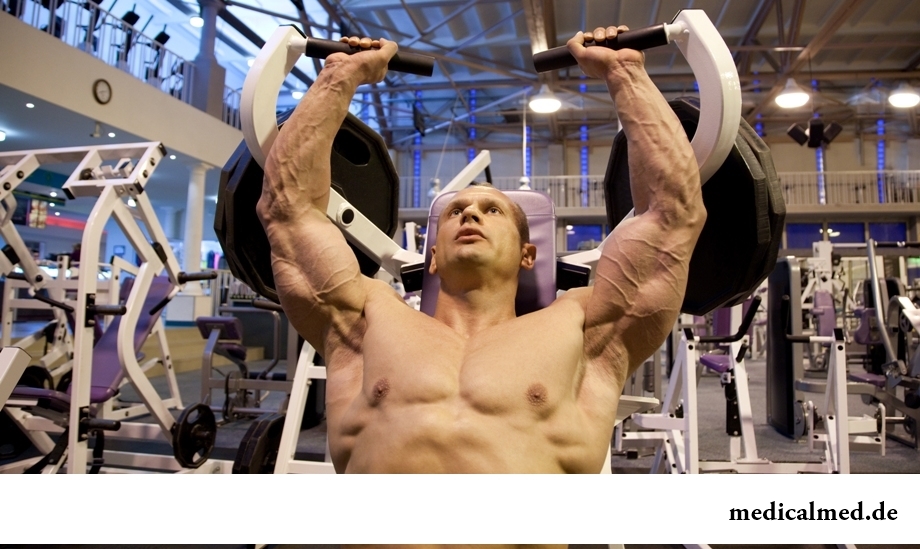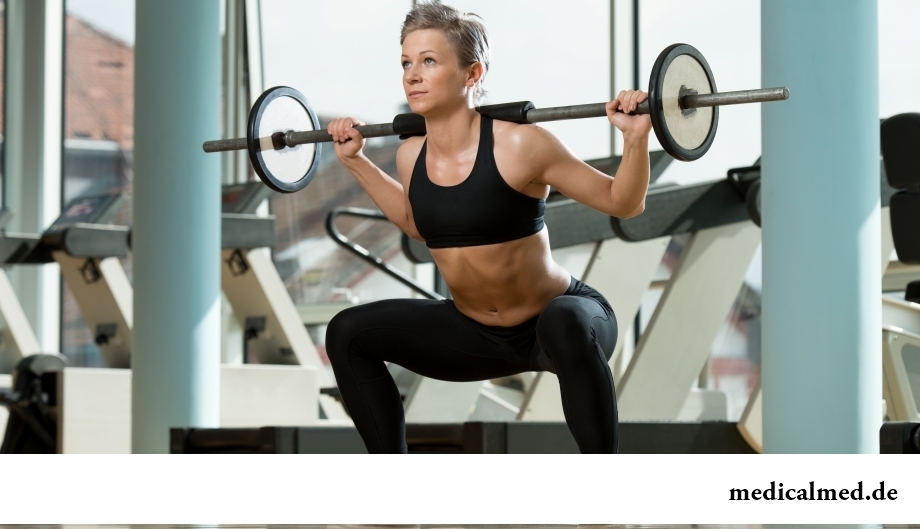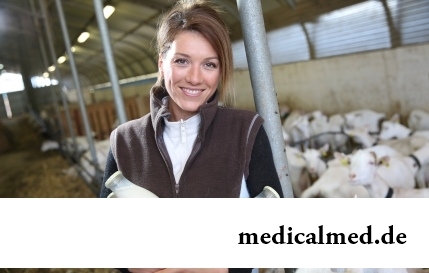





Powerlifting
Powerlifting – power sport which problem consists in overcoming weight of the maximum burdening. Unlike bodybuilding, a main objective of powerlifting is not esthetic beauty of a body, but development of physical force.

The concept of powerlifting came from two English words - "power" (force) and "lift" (to lift). This sport is called differently power triathlon: it is connected with the fact that it as competitive disciplines includes three main exercises:
- Squats with the bar located on an upper part of shovels;
- Bar press, lying on a bench;
- Draft of a bar.
These exercises are basic and are recommended to the beginning athletes for development of force and a set of muscle bulk.
Joint results of powerlifting on three disciplines during the competitions define qualification of the athlete. Assessment of indicators occurs on total weight in all three exercises. In case of identical results the victory is awarded to the athlete with a smaller weight. If there is a need of comparison of athletes with various weight categories, Glossbrenner and Wilks's formulas are applied.
The powerlifting as sport, is not included in structure of the Olympic Games, however it is a part of the World games which are taking place under supervision of the International Olympic Committee.
Classical powerlifting
Classical powerlifting call power triathlon (a press, draft and squats) with participation in which the minimum set of equipment is used. Originally equipment in powerlifting appeared for the purpose of protection of the athlete against injuries, however in recent years producers improved the products, having provided due to rigidity of fabric and other "cunnings" an increase from 5 to 15 kg of weight in each movement. So, Ryan Kennelli could squeeze out in equipment 487,6 kg, and without equipment - only 294,8 kg. Similar results on powerlifting caused rapid growth of standards of this sport over the last 10 years.
At the moment in powerlifting the following equipment is applied:
- Protective bandage on knees and wrists;
- Overalls for squat;
- Undershirt for a press lying;
- Overalls for stanovy draft and some other.
Initially International federation of powerlifting held equipment powerlifting competitions, however in recent years the bezekipirovochny or classical powerlifting won recognition of athletes in spite of the fact that standards for this kind of sport are in a development stage so far.
Powerlifting trainings
As it was already told above, this sport includes performance of three main exercises:
- Squats with a bar on spin. The starting position - a signature stamp is on trapezoid muscles of a back, a leg at shoulder length, the weight of a bar is evenly distributed on both extremities. We take a deep breath and, having held the breath, smoothly we fall down. At the same time knees are bent, and buttocks "go" down and back. As soon as hips become parallel to a floor, it is necessary to strain muscles and to return to a starting position;
- Press lying on a bench. The starting position - a bar keeps on the hands extended over a breast. Then the bar falls by a breast, is squeezed out of this situation on outstretched arms. After exercise performance the bar is returned to an emphasis;
- Draft of a bar. A starting position - the torso is inclined forward, a little bent in a waist. The signature stamp of a bar is before shins. We take a breath, we hold the breath and we tighten a bar to a stomach. At the same time elbows move up and strictly back. It is necessary to aim to raise elbows as it is possible above. Having tightened a shell to a belt, make an exhalation and smoothly lower it on a floor.
Based on long-term experience, specialists recommend:
- to divide powerlifting trainings on zhimovy, prisedovy and traction (such method leaves to the athlete of force on performance of auxiliary exercises);
- to vary intensity of loading, dividing trainings on easy, average and heavy. Intensity of loading is understood as the number of raising of a bar, carried to its average weight (as a percentage).
Auxiliary exercises about which it was told above have a certain value: they are used for increase in level of the general physical training of the athlete. Also promote formation of such qualities of the powerlifter as force, endurance, speed, flexibility, and also to development of separate groups of muscles of a body, exerting impact on the results on powerlifting received at competitions. Trainings with weights, a bar, dumbbells, exercise machines, shock-absorbers, exercises of gymnastic and acrobatic character concern to them.
Powerlifting equipment
For powerlifting trainings the following devices are used:
- Bar;
- A set of pancakes (it is recommended to use not rubberized pancakes having smaller thickness);
- Racks for squats and a press lying;
- Scaffold for stanovy draft.

Contraindications to classes in powerlifting
There is a number of diseases at which it is not recommended to be engaged with burdenings. Treat them:
- Hemorrhoids. It is possible to start trainings only after an absolute recovery;
- Hernia. The disease is treated only in the surgical way;
- The increased intracranial pressure (the strengthened trainings can lead to sight loss);
- Oncological diseases.
At the following diseases it is possible to go in for powerlifting, but with a certain care and only after consultation with the specialist:
- Diseases of cardiovascular system;
- Osteochondrosis;
- Scoliosis;
- Prostatitis.
Powerlifting trainings in the moderate mode allow to improve the general condition of an organism, to strengthen immunity and to help treatment of a set of diseases of various character. For example, exercises on this sport are "lifebuoy" for treatment of pulmonary diseases in chronic forms (they allow to get rid of excess liquid and to increase lung volume).
The basic rule to which it is necessary to adhere, going in for powerlifting - to strictly observe recommendations of the trainer and the attending physician.
Stomatologists appeared relatively recently. In the 19th century to pull out painful teeth belonged to duties of the ordinary hairdresser.

Striya (extension) are the defects of skin having an appearance of direct or wavy strips from 1 to 10 cm long and 1-5 mm wide. In the majority with...
Section: Articles about health
Scientists always aimed to offer fundamental explanations for medical problems. Their theories formed the basis of modern methods of treatment of the hardest pathologies and helped to save a set of lives. However stories are known also such theoretical constructions, following to...
Section: Articles about health
According to World Health Organization, every third inhabitant of Earth has excess weight, and every tenth has obesity. The reason of this phenomenon, according to specialists, roots in one not very comforting fact: most of people consume much more calories, than it is necessary. How it turns out what we overeat? Why it is so difficult to refuse an excess portion tasty or additives? Let's try to find out what factors prevent us to eat food with reasonable moderation....
Section: Articles about health
Any person who faced a disease knows that treatment costs expensive. It belongs also to consultations qualified the specialist...
Section: Articles about health
Cystitis, or inflammation of a mucous membrane of a bladder, this very widespread disease which, owing to some features of a structure of bodies of urinogenital system, women have approximately four times more often than men. In the main risk group...
Section: Articles about health
Cellulitis - very widespread cosmetic shortcoming which arises approximately at 80% of women sooner or later. Emergence it is connected with change of structure of a hypodermic fatty layer. At the same time on the surface of skin at first there are roughnesses (cambers and cavities), and then small consolidations, the so-called effect of an orange-peel is shown. Changes in a condition of hypodermic cellulose are a consequence of a hormonal imbalance in an organism....
Section: Articles about health
Transfusion of donor blood has almost century history. In spite of the fact that this procedure is quite usual for many people, itself п...
Section: Articles about health
The climax, or menopause is the normal process of the termination of genital function of the woman which is followed by serious hormonal changes in an organism. Usually the menopause begins at the age of 50-55 years, but characteristics of this process are very individual. T...
Section: Articles about health
More than a half of the married couples which faced prostatitis – leave. The new broadcast "Female View of Prostatitis" will help to learn – whether you have or your relatives problems....
Section: Articles about health
Smack in a mouth can arise in the natural way – as a result of lack of morning hygiene or reception of the corresponding food. Odn...
Section: Articles about health
Dark circles (bruises) under eyes – a shortcoming with most of which often fight against the help of cosmetics (proofreaders, saloon procedures and so forth), eliminating only its visibility. However, according to doctors, skin around eyes – the indicator of many disturbances in an organism...
Section: Articles about health
Such trouble as the milkwoman's attack, at least once in life happened almost to each woman. Prevalence of a disease is explained by the fact that the causative agent of an illness belongs to the so-called opportunistic microflora living on mucous membranes of any human body and which is becoming more active only under favorable conditions. If you had curdled allocations from a vagina, the itch and burning in external genitals, or painful feelings disturb at sex...
Section: Articles about health
Summer in the heat. Many are going to spend vacation abroad. Travelers the tender seas, rest on beaches wait, for survey достоп...
Section: Articles about health
Diapers for adults – individual one-time means of hygiene which in some situations is irreplaceable and from such situations any person is not insured. Though nobody perceives need of their use with enthusiasm, however without it to a sra...
Section: Articles about health
The naturopathy sometimes moves as the new direction of medicine, something like fashionable hobby, and there is nothing farther from the truth. This most ancient direction, the word "naturopathy" is translated as "treatment by the nature", and, no doubt, treatment by natural gifts was the first and only, available to the person in ancient times. Despite modern achievements of medicine, the naturopathy remains urgent and today, anyway the person - a part of the nature, and природн...
Section: Articles about health
For the person who daily since morning gathers for work it is very important to wake up vigorous and ready by day of work. On most...
Section: Articles about health
EKO, or extracorporal fertilization - a method of treatment of infertility which became the reason of a set of broken-down copies in due time accused the people working on its creation neither more nor less of rivalry good luck. Already very few people deny the rights...
Section: Articles about health
Life activity of one-celled fungi of the sort Candida, related to yeast is a proximate cause of development of candidiasis (milkwoman). Normal these microorganisms are a part of the microflora living in an oral cavity and intestines of most of people and also in a female genital tract. The pathological phenomena are observed when fungi begin to breed too violently. At the same time there is an inflammatory process affecting mucous membranes and which is shown very nepr...
Section: Articles about health
Aspirin (acetylsalicylic acid) – one of those drugs which are known literally to all. It is available in each home first-aid kit...
Section: Articles about health
The immunity role in growth of the child is invaluable. The proteins-immunoglobulins produced by immune system preserve the child against the diseases capable − owing to an organism weak still − to serve as a stressful factor, to become the reason of many complications and delays in unless...
Section: Articles about health
According to doctors, more than a half of men of 25-50 years suffer from frustration of the urinogenital sphere, but the minority sees a doctor from them. And in vain - even the insignificant discomfort in the field of generative organs can serve as a symptom of an illness fraught with grave consequences for health. So - after 40 years - it is easy for most widespread disease of the sexual sphere of men to pass the first symptoms of prostatitis (weight in the bottom of a stomach, decrease in a libido), having written off for overfatigue and fatigue. Let's consider...
Section: Articles about health
The unpleasant feelings connected with spring breakdown are familiar almost to each of us. Often happens that in March-April on the person...
Section: Articles about health
Diseases of joints often begin imperceptibly for the person. The first stages of destruction of the cartilaginous tissue providing soft and free sliding of heads of bones in joint bags proceed slowly and absolutely without serious consequences. Especially unpleasantly for that this пр...
Section: Articles about health
Energy saving lamps are one of the most popular products of innovative technologies, and there is no wonder: they much more economic also are more long-lasting than usual filament lamps. At the same time there are fears that energy saving bulbs can become the reason of emergence of problems with health. Unfortunately, some of similar opinions have the real reasons....
Section: Articles about health
It seems, quite recently you brought the baby from maternity hospital, but time flew by, and here it is already going to join the first...
Section: Articles about health
New year, wedding, birthday, office party – an occasion to drink at the Russian person will always be. How to reduce a negative impact of alcohol by an organism and to avoid a condition of strong intoxication? The most correct council – to refuse the use spirits напитк...
Section: Articles about health
A little more than a century ago goat milk was a traditional food stuff of most of Russians. Unfortunately, today on tables of our compatriots it appears extremely seldom. The reason that the use of so useful product practically came to naught, not only in very modest volumes of its production and, respectively, rather high cost. Potential consumers are just insufficiently informed on unique properties of goat milk and that advantage which...
Section: Articles about health
